How Much Does it Cost to Plant a Tree 2024? A Comprehensive Cost Breakdown
- February 6, 2024
- 1 comment
How much does it cost to plant a tree in 2024? Get a comprehensive cost breakdown to budget effectively for your tree planting projects. an era increasingly defined by environmental consciousness, the act of planting a tree has become a symbol of hope and sustainability. Beyond the simple gesture towards a greener earth, the decision to plant a tree involves considerations of both time and financial investment. This article aims to unpack the full cost of planting a tree, balancing initial outlays with long-term maintenance, and the myriad benefits that trees bring to environments, economies, and personal well-being.

Table of Contents
- Why Plant Trees?
- Choosing the Right Tree
- Price Range Table for Selecting the Right Tree
- Initial Costs of Tree Planting
- Site Preparation and Planting
- Immediate Post-Planting Care
- Ongoing Maintenance and Care
- Long-term Investment and Benefits
- Financial Incentives and Support
- Conclusion
- FAQs
Why Plant Trees?
- Environmental Benefits: Trees are the planet’s lungs, absorbing carbon dioxide and releasing oxygen, making them crucial in combating climate change. They provide habitats for biodiversity, stabilize soil to prevent erosion and improve air quality by filtering pollutants.
- Economic Benefits: Strategically planted trees can significantly increase property values. Moreover, they offer cost savings by reducing energy bills; shading homes in the summer and blocking winds in the winter can lower heating and cooling costs.
- Personal and Social Benefits: Beyond their aesthetic appeal, trees contribute to improved mental health and well-being. Neighborhoods with abundant tree cover enjoy enhanced community cohesion and reduced stress levels among residents.
Choosing the Right Tree
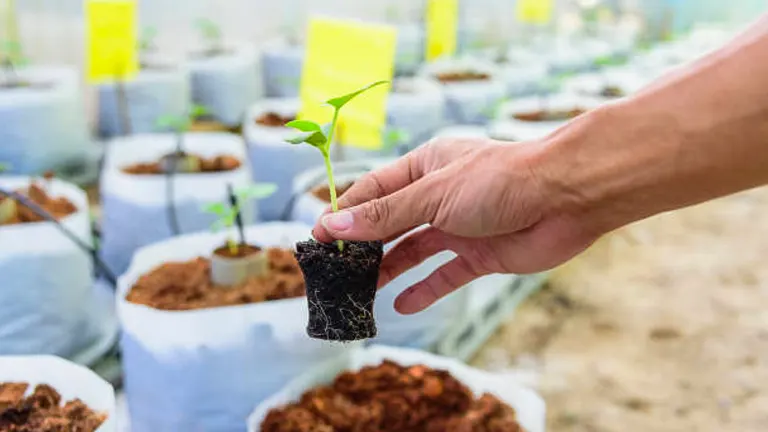
The journey to planting a tree begins with selecting the right species. Native trees are generally recommended for their adaptability to local conditions and minimal care requirements. The tree’s purpose—whether for fruit, shade, or beauty—will also guide the selection process. Size and age are crucial factors; while mature trees provide immediate benefits, they come with higher costs and greater planting challenges. The choice of a reputable nursery or supplier is essential to ensure the health and quality of the tree, affecting its survival and growth.
Selecting the appropriate tree for your space is a foundational step in the planting process, one that requires careful consideration of several key factors to ensure the health, growth, and sustainability of your investment. Here’s what to keep in mind:
- Native vs. Exotic Species: Opt for native trees whenever possible. They are better adapted to the local climate and soil conditions, require less maintenance, and provide essential habitat for wildlife. Exotic species, while sometimes appealing for their unique characteristics, may require more care and be less beneficial to the local ecosystem.
- Purpose: Identify the primary reason for planting the tree. Are you looking for shade, fruit production, or ornamental beauty? Each purpose will lead you to a different subset of species, each with its own care requirements and benefits.
- Size and Maturity: Consider the tree’s mature size and how it will fit into your landscape. Larger, mature trees offer immediate benefits but are more expensive and require careful planting. Younger trees, though initially less impactful, are more affordable and can adapt more easily to their new environment but require patience to reach maturity.
- Supplier Quality: The source of your tree significantly impacts its health and growth potential. Choose reputable nurseries or suppliers known for the quality of their plants. Healthy trees from reliable sources have a better survival rate and require less corrective care down the line.
Price Range Table for Selecting the Right Tree
The following table provides a general price range for different tree types based on their purpose, size, and age. Please note that these prices are indicative and can vary based on location, supplier, and specific tree species.
| Purpose | Size/ Age | Price Range |
|---|---|---|
| Shade | Small (1-3 ft) | $25 – $100 |
| Medium (4-6 ft) | $100 – $250 | |
| Large (7+ ft) | $250 – $500+ | |
| Fruit | Sapling (1-3 ft) | $20 – $50 |
| Mature (4+ ft) | $100 – $400 | |
| Ornamental | Young (1-3 ft) | $30 – $150 |
| Mature (4+ ft) | $150 – $600+ |
Tips for Making the Best Choice
- Research: Before making a purchase, research the specific needs and characteristics of the tree species you’re considering. This will help ensure that the tree aligns with your environmental conditions and landscaping goals.
- Consult Experts: Don’t hesitate to consult with local arborists, extension services, or nursery professionals. Their expertise can guide you to the best species for your area and needs.
- Plan for the Future: Remember that a tree is a long-term investment. Consider how it will impact your landscape as it grows. Ensure there is enough space for its full mature size, both above and below ground.
By carefully selecting the right tree, considering its purpose, size, and the quality of the supplier, you’re laying the groundwork for successful planting. With patience and the right care, your tree will grow to fulfill its intended role in your landscape, whether that’s providing shade, bearing fruit, or adding beauty to your surroundings.
Initial Costs of Tree Planting
The costs associated with planting a tree can vary widely, influenced by factors such as the type of tree, its size, and the specific conditions of the planting site. Here’s a more focused breakdown that aims to offer unique insights into each aspect of the initial investment.
| Expense Category | Specific Cost Factors | Estimated Cost Range |
|---|---|---|
| Tree Purchase | – Type (native, fruit, etc.) – Size (small sapling to mature tree) | $20 – $500+ |
| Planting Supplies | – Quality of soil amendments – Mulch type – Stakes and ties | $30 – $150 |
| Labor Costs | – Professional vs. DIY planting – Site complexity | DIY: $0 – Professional: $50 – $300+ |
| Site Preparation | – Soil testing – Landscape modifications – Accessibility improvements | $0 (DIY) – $200 |
| Watering Equipment | – Hoses – Watering cans – Drip irrigation systems | $20 – $100 |
| Protective Measures | – Fencing – Pest deterrents – Tree guards | $15 – $150 |
Investing in a new tree involves a combination of direct costs like the tree itself and supplies, as well as indirect costs such as labor and long-term care equipment. The total expense can vary significantly, with a broad estimated range from about $85 for a basic, self-planted setup to over $1,000 for larger projects requiring professional assistance and specialized equipment.
Table Summary
Planting a tree is a forward-looking action with both immediate costs and enduring benefits. While the upfront financial commitment can be notable, especially for larger or more specialized plantings, the ecological, aesthetic, and property value improvements offer a compelling return on investment. Smart planning, leveraging community resources, and considering long-term growth can help manage these initial costs effectively.
Tips for Optimizing Initial Costs
- Budget Wisely: Allocate funds for both the purchase and the planting process, considering the full scope of needs.
- Research Thoroughly: Different tree types and sizes have varying price points and care requirements; choose based on both initial and long-term considerations.
- Utilize Local Resources: Many communities offer free or low-cost trees, planting services, and advice through local conservation programs or utility companies.
- Prepare the Site Yourself: Where possible, undertake the site preparation and planting to save on labor costs.
- Invest in Prevention: Spending a bit more upfront on quality soil, mulch, and protective measures can save costs on future tree health issues.
By carefully considering these factors and planning accordingly, you can ensure that your tree planting project is both successful and financially manageable, setting the stage for years of environmental and personal benefits.
Site Preparation and Planting
Before a tree can take root, the planting site must be meticulously prepared. This preparation involves assessing the location for sunlight, drainage, and space for the tree to grow—both above and below ground. Homeowners should also consider proximity to buildings, underground utilities, and overhead lines. Soil testing is advisable to determine pH and nutrient levels, ensuring the site can support the chosen tree species. Adjustments to the site, such as amending the soil or altering the landscape for better water drainage, can incur additional costs ranging from $25 to $100, depending on the extent of the modifications needed.
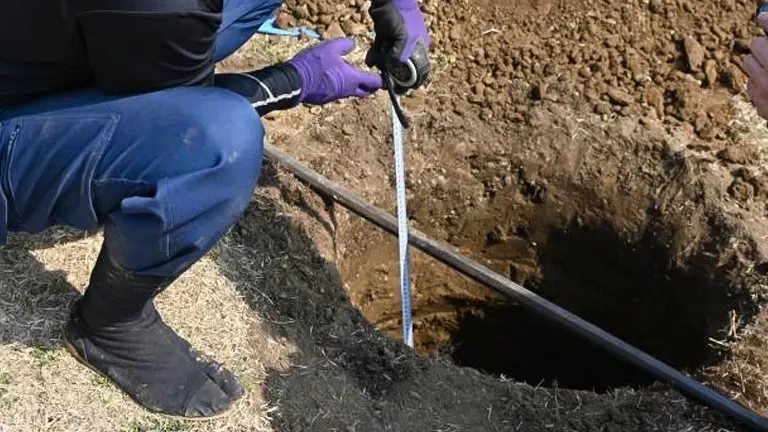
The planting process itself requires careful handling to ensure the tree’s successful establishment. Digging a hole twice as wide as the root ball but no deeper is critical to give the roots room to spread without sinking the tree too low into the ground. After placing the tree, backfilling with the original soil, watering thoroughly, and applying a layer of mulch to conserve moisture and reduce weed competition are essential steps. While these activities may not require significant financial outlay if done personally, they demand time, effort, and a basic understanding of tree planting principles.
Additional Tips:
- Before planting, inspect the root ball for circling roots and gently tease them apart. If roots are densely packed, make vertical cuts to encourage them to grow outward rather than continue circling.
- Plant trees during their dormant season—fall or early spring for most species. This timing gives them a chance to establish roots in the new location before the stress of heat in summer or cold in winter.
- Establish a regular watering schedule based on the tree’s needs and local climate. Overwatering can be as harmful as under-watering, so adjust based on rainfall and soil moisture levels.
- Only stake the tree if it’s necessary due to wind or the inability to stand upright on its own. If staking, ensure the materials are loose enough to allow some movement, promoting stronger root and trunk growth, and remove stakes after one year.
- Consult with local extension services, arborists, or a trusted nursery for advice specific to your region’s climate and soil conditions. They can offer valuable insights into the best trees for your area and how to care for them.
By following these enhanced guidelines and tips, gardeners can significantly increase the likelihood of a successful tree planting, ensuring the tree’s health and vitality for years to come.
Immediate Post-Planting Care
The care provided in the weeks following planting is pivotal to a tree’s survival and health. Watering is the most critical post-planting care aspect, with newly planted trees requiring regular, deep watering to establish their roots. The cost of additional water usage can be modest but should not be overlooked in the overall budgeting for tree planting. Implementing mulch rings can help retain soil moisture and reduce temperature extremes, with a typical cost of $10 to $50 for mulch materials.
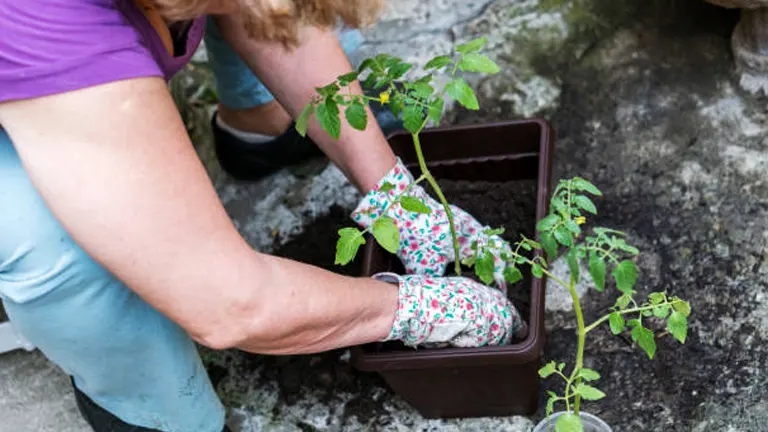
Supporting young trees with stakes and ties may be necessary, especially in windy areas or if the tree is particularly tall and slender. A staking kit can cost between $10 and $30. However, it’s important to use staking only when necessary and to remove it once the tree is stable enough to stand independently to prevent damage to the trunk and encourage stronger root growth.
Ongoing Maintenance and Care
As the tree grows, ongoing maintenance becomes crucial to its health and vitality. Pruning is essential to shape the tree, remove dead or diseased branches, and encourage healthy growth. Homeowners can do basic pruning themselves, but professional services may be required for large trees or significant pruning tasks, typically costing $75 to $500, depending on the job’s complexity.
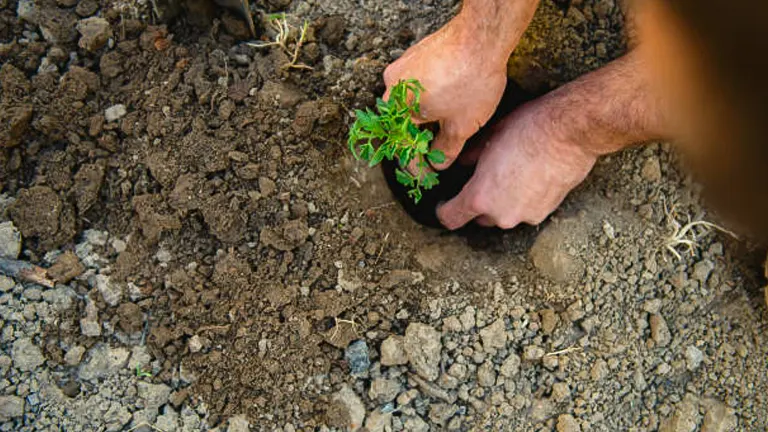
Regular health monitoring to identify signs of stress, disease, or pest infestation early can save costs on treatment and prevent the potential loss of the tree. Seasonal care, including adjusting watering habits, applying fertilizer, and preparing the tree for winter, varies in cost but is an integral part of maintaining a healthy tree.
Here are several tips:
- Regular Watering: Establish a consistent watering schedule that meets the tree’s needs, particularly during its first two to three years. Water deeply and infrequently to encourage the development of a strong, deep root system. Adjust based on season and rainfall to avoid over or under-watering.
- Mulching: Apply a 2-3 inch layer of organic mulch around the base of the tree, extending out to the drip line. Mulch helps retain soil moisture, regulate soil temperature, and suppress weeds. Avoid piling mulch against the tree trunk to prevent moisture buildup and potential rot.
- Pruning: Prune trees during the dormant season to remove dead or diseased branches and to shape the tree. Proper pruning techniques are essential to avoid damaging the tree. Focus on maintaining the tree’s natural form, and avoid over-pruning which can stress the tree.
- Fertilizing: Conduct a soil test to determine the specific nutrient needs of your tree. Fertilize accordingly, typically in the spring, to promote healthy growth. Use a balanced, slow-release fertilizer that matches the tree’s requirements.
- Pest and Disease Management: Regularly inspect the tree for signs of pests and diseases. Early detection is key to managing potential issues. Use integrated pest management (IPM) strategies to address problems with minimal environmental impact.
- Protection from Physical Damage: Protect the tree from mechanical damage caused by lawn mowers and trimmers by maintaining a sufficient mulch ring around the tree. In winter, guard against rodent damage by installing tree guards or plastic protectors around the base of the trunk.
- Soil Care: Avoid compacting the soil around the tree’s root zone. Compacted soil can limit air, water, and nutrient uptake. If compaction is an issue, consider gentle aeration techniques to improve soil structure.
- Stress Reduction: Minimize stress on the tree by avoiding major landscape changes in the immediate area. Construction, grade changes, or significant alterations to drainage patterns can adversely affect tree health.
- Seasonal Adjustments: Adapt care practices to the changing seasons. Increase watering in dry summer months, protect trees from harsh winter conditions with appropriate insulation (where necessary), and adjust pruning and fertilization schedules according to the tree’s growth cycle and local climate.
- Professional Consultation: When in doubt, consult with a certified arborist or tree care professional. They can provide specialized advice, diagnose health issues, and recommend treatment options to ensure the continued well-being of your tree.
By adhering to these ongoing maintenance and care tips, you can significantly enhance the health, appearance, and lifespan of your tree, contributing positively to your landscape and the environment.
Long-term Investment and Benefits
Planting a tree is more than a one-time cost; it’s an investment in the future. As trees mature, they provide increasing benefits. Mature trees can significantly enhance property values—by up to 15% in some cases. They become more effective at carbon sequestration, improving air quality and contributing to the fight against climate change. The shade provided by trees can reduce energy costs in homes by as much as 25%, according to the U.S. Department of Energy, by cooling properties during the summer months and offering windbreaks in the winter.

The environmental impact of a single tree, over its lifetime, is profound. A mature leafy tree can produce as much oxygen in a season as 10 people inhale in a year. Trees also support biodiversity, offering habitats for birds, insects, and other wildlife, thus contributing to a healthier ecosystem.
On a personal level, trees offer aesthetic beauty and a sense of peace, enhancing mental health and well-being. Communities with ample tree cover enjoy lower stress levels, improved outdoor recreational spaces, and a stronger sense of community. The investment in planting a tree today pays dividends not only to the current homeowner but to future generations and the broader environment.
| Benefit Category | Description | Estimated Value/Impact |
|---|---|---|
| Property Value Increase | Mature trees can significantly enhance property aesthetics, leading to higher property values. | Increase in property value: 7%-15% |
| Energy Savings | Trees provide shade in summer and windbreaks in winter, reducing heating and cooling costs. | Annual energy cost savings: $100-$250 |
| Air Quality Improvement | Trees absorb pollutants and carbon dioxide, improving air quality. | Value of pollutant removal: $50-$500 per tree/year* |
| Carbon Sequestration | Trees capture and store carbon dioxide, helping mitigate climate change. | 48 lbs of CO2 per tree/year** |
| Stormwater Management | Trees reduce runoff and erosion, improving water quality and reducing stormwater management costs. | Reduction in runoff: 1,000 gallons per tree/year |
| Social and Health Benefits | Trees contribute to lower stress levels, improved mental health, and enhanced recreational spaces. | Not easily quantified but highly valuable |
| Biodiversity Support | Trees provide habitat for wildlife, supporting local biodiversity. | Critical for ecosystem health and resilience |
| Community Benefits | Urban trees contribute to cooler cities, reduced urban heat island effect, and enhanced community aesthetics. | Reduction in city temperatures: up to 10°F |
Notes:
- The value of pollutant removal varies significantly based on tree species, size, and environmental context.
- Carbon sequestration estimates are based on average values for young, healthy trees growing in urban settings.
Insights:
- Investment Perspective: While the initial costs of planting and establishing a tree (ranging from $100 to over $1,000 depending on the tree size and species) may seem significant, the long-term benefits offer substantial returns on investment through enhanced property value, energy savings, and environmental contributions.
- Holistic Value: Beyond measurable economic benefits, trees offer invaluable social and health advantages by fostering more livable and sustainable communities. These benefits, while harder to quantify, contribute significantly to quality of life.
- Community Impact: Investing in tree planting and maintenance can yield significant benefits for entire communities, not just individual property owners. Urban forestry initiatives can transform cities by improving air quality, reducing heat islands, and creating greener, more welcoming public spaces.
- Sustainability and Climate Action: Trees are a critical component of local and global efforts to combat climate change. By sequestering carbon, they act as natural carbon sinks, while their cooling effects and stormwater management capabilities contribute to climate resilience.
Financial Incentives and Support
Recognizing the myriad benefits trees offer, many governments, non-profit organizations, and community groups provide financial incentives, subsidies, and support for tree planting initiatives. These can significantly offset the initial and ongoing costs associated with planting and maintaining trees.
- Government Subsidies and Grants: Federal, state, and local governments often offer grants or tax incentives for planting trees, especially native species or those planted for conservation purposes. Programs like the Arbor Day Foundation’s Tree City USA provide resources and support for urban and community forestry projects.
- Community Programs: Many cities and towns run their own tree planting programs, offering free or discounted trees to residents willing to plant them on their property. These programs sometimes include free site assessments, planting services, and educational resources on tree care.
- Utility Companies: Some utility companies provide free trees to customers as part of energy conservation programs, aiming to reduce energy demand through strategic tree planting.
Researching available resources in your area can significantly reduce the costs of planting trees and ensure their success.
Conclusion
The cost of planting a tree encompasses far more than the initial price of the tree and planting supplies. It includes the commitment to ongoing care and maintenance to ensure the tree grows to its full potential. However, the return on this investment is substantial—financially, environmentally, and emotionally. Trees not only enhance the immediate surroundings of a home but also contribute to the health of the planet and the well-being of future generations.
FAQs
- What is the average cost to purchase a young tree?
The average cost of purchasing a young tree ranges from $20 to $100, varying by species, size, and nursery. Specialty trees may be priced higher. - How much does professional tree planting cost?
Professional tree planting services usually charge from $50 to $300 or more, depending on the tree’s size and the complexity of the planting site. - Are there additional costs involved in preparing the site for planting?
Yes, site preparation costs, including soil testing and amendments, can range from $0 (if done personally) to $200, based on the specific needs of the site. - Does the cost of a tree include supplies for planting and initial care?
No, the cost of the tree typically covers just the tree itself. Supplies such as shovels, mulch, and stakes are extra, potentially adding $50 to $150 to your total. - Can I save money by planting the tree myself?
Absolutely. DIY planting can significantly reduce costs, eliminating professional labor fees. However, you’ll need to invest time and ensure you have the right tools and knowledge. - What are the ongoing maintenance costs for a newly planted tree?
Ongoing maintenance, including watering, mulching, and pruning, can vary widely. Expect to spend anywhere from $20 to $100 per year on water, mulch, and basic tools. - How do tree planting costs differ by tree type (e.g., shade vs. fruit trees)?
Fruit trees may require more initial investment in terms of specific soil amendments and protective measures against pests, potentially making them more expensive than shade trees. Prices can vary widely, from around $20 for a simple shade sapling to over $100 for certain fruit trees. - Are there financial assistance programs for tree planting?
Yes, many local governments and environmental organizations offer grants, vouchers, or discounts for tree planting, which can help offset costs. It’s worth researching local programs in your area.
Planting a tree involves various costs, from purchasing to maintenance. Despite the initial investment, the enduring value and benefits they provide make it a worthwhile endeavor for any green space .By understanding these costs and planning accordingly, individuals can make informed decisions that contribute to a greener, healthier future.

Benjamin Brooks
Forestry AuthorGreetings! I'm Benjamin Brooks, and my journey over the past 15 years has revolved around the fascinating realms of content creation, expertise in snow clearing, and the intricate world of lumberjacking and landscaping. What began as a simple curiosity about the natural world and heavy machinery has evolved into a passionate profession where my love for crafting words intertwines seamlessly with my lumberjacking and garden skills.










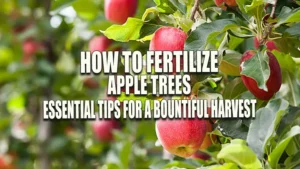


Thanks for the noble planning I am interested in coming up with a good nursery so my desire to learn the best practices
kiraithe casty
October 7, 2024 9:01 am